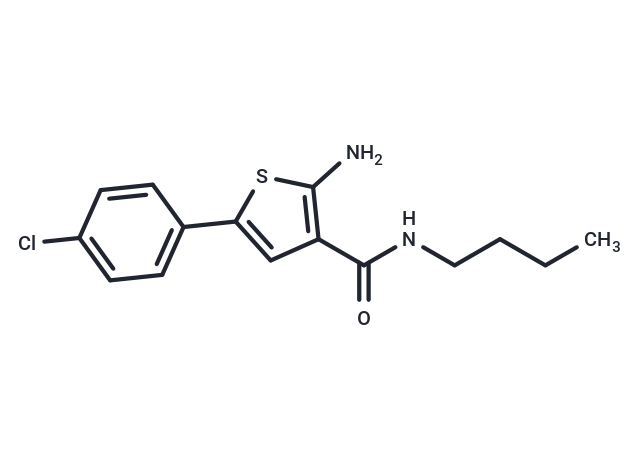Shopping Cart
- Remove All
 Your shopping cart is currently empty
Your shopping cart is currently empty

R110 shows the potential for cancer research that is a potent, competitive MIF2 tautomerase inhibitor (IC 50 = 15 μM) [1].

| Pack Size | Price | Availability | Quantity |
|---|---|---|---|
| 25 mg | $1,170 | 6-8 weeks | |
| 50 mg | $1,530 | 6-8 weeks | |
| 100 mg | $2,500 | 6-8 weeks |
| Description | R110 shows the potential for cancer research that is a potent, competitive MIF2 tautomerase inhibitor (IC 50 = 15 μM) [1]. |
| Molecular Weight | 308.83 |
| Formula | C15H17ClN2OS |
| Cas No. | 1985622-33-0 |
| Storage | Powder: -20°C for 3 years | In solvent: -80°C for 1 year | Shipping with blue ice. |

Copyright © 2015-2025 TargetMol Chemicals Inc. All Rights Reserved.